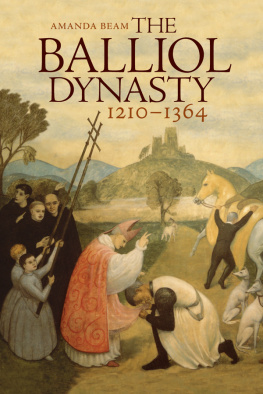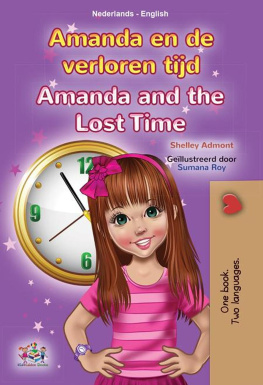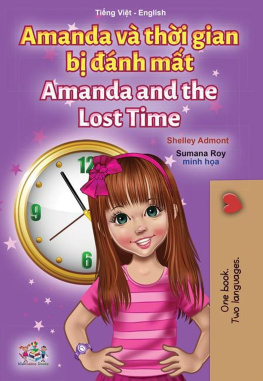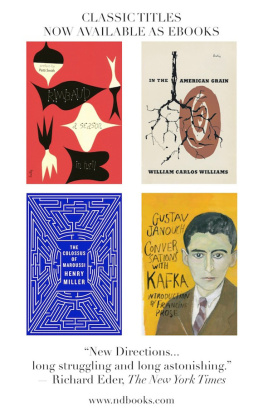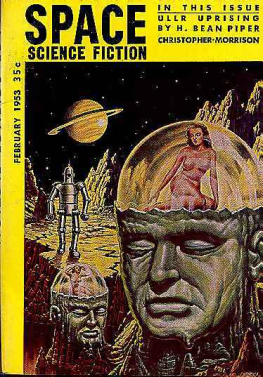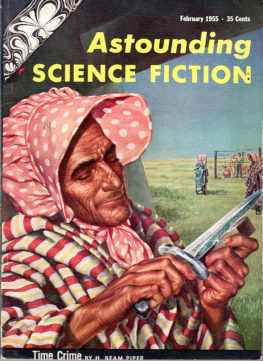Amanda Beam - The Balliol Dynasty 1210-1364.
Here you can read online Amanda Beam - The Balliol Dynasty 1210-1364. full text of the book (entire story) in english for free. Download pdf and epub, get meaning, cover and reviews about this ebook. City: La Vergne, year: 2021, publisher: Birlinn, genre: Home and family. Description of the work, (preface) as well as reviews are available. Best literature library LitArk.com created for fans of good reading and offers a wide selection of genres:
Romance novel
Science fiction
Adventure
Detective
Science
History
Home and family
Prose
Art
Politics
Computer
Non-fiction
Religion
Business
Children
Humor
Choose a favorite category and find really read worthwhile books. Enjoy immersion in the world of imagination, feel the emotions of the characters or learn something new for yourself, make an fascinating discovery.
- Book:The Balliol Dynasty 1210-1364.
- Author:
- Publisher:Birlinn
- Genre:
- Year:2021
- City:La Vergne
- Rating:5 / 5
- Favourites:Add to favourites
- Your mark:
- 100
- 1
- 2
- 3
- 4
- 5
The Balliol Dynasty 1210-1364.: summary, description and annotation
We offer to read an annotation, description, summary or preface (depends on what the author of the book "The Balliol Dynasty 1210-1364." wrote himself). If you haven't found the necessary information about the book — write in the comments, we will try to find it.
The Balliol Dynasty 1210-1364. — read online for free the complete book (whole text) full work
Below is the text of the book, divided by pages. System saving the place of the last page read, allows you to conveniently read the book "The Balliol Dynasty 1210-1364." online for free, without having to search again every time where you left off. Put a bookmark, and you can go to the page where you finished reading at any time.
Font size:
Interval:
Bookmark:

THE BALLIOL DYNASTY 12101364
THE BALLIOL DYNASTY
12101364
Amanda G. Beam

This eBook was published in Great Britain in 2021 by John Donald, an imprint of Birlinn Ltd
Birlinn Ltd
West Newington House
10 Newington Road
Edinburgh
EH9 1QS
First published in Great Britain in 2008 by John Donald
Copyright Amanda Beam, 2008
eBook ISBN 978 1 78885 402 3
The right of Amanda Beam to be identified as the author of this book has been asserted by him in accordance with the Copyright, Design and Patent Act 1988
All rights reserved. No part of this publication may be reproduced, stored, or transmitted in any form, or by any means electronic, mechanical or photocopying, recording or otherwise, without the express written permission of the publisher.
British Library Cataloguing-in-Publication Data
A catalogue record for this book is available on request from the British Library
Barnard Castle, County Durham. The stronghold of the Balliol family from the mid-twelfth century, this impressive castle was built by Bernard de Balliol and was besieged by the Scots in the wars of 121517.
Hitchin Parish Church, Hertfordshire. The Balliol family had a manor at Hitchin, which would probably be used frequently by John (I) in the 1260s so he could be closer to the English king in London.
Bois de Bailleul, Bailleul-en-Vimeu. Within this thick forest are the foundations of the familys castle in Picardy, from where they took their name.
Dompierre Parish Church, Dompierre-sur-Authie. This church sits upon the ancient foundations of the original church, founded by Bernard de Balliol in the twelfth century.
Hlicourt Parish Church, Hlicourt. King John lived out his days on these lands around Hlicourt. The familys ancestral chteau was destroyed in 1422.
John (I) Balliol. The patriarch of the family from 1229 to 1268, John was lord of Bywell and Barnard Castle in northern England and was one of the wealthiest lords in the country.
Dervorguilla de Balliol. As daughter of Alan, lord of Galloway, she brought even more wealth and land to her husband after their 1233 marriage. She also completed the foundation of Balliol College in 1282.
Sweetheart Abbey, Galloway. Founded in 1273 by Dervorguilla de Balliol, this serves as the burial place of Dervorguilla and the heart of John (I).
Buittle Church, near Dalbeattie, Galloway.
Buittle Castle, near Dalbeattie, Galloway. The remains of the Balliol caput in Galloway.
Seal of John (II) Balliol. The seal used before John became king of Scotland.
Coronation of John Balliol, 1292. This image, from the Cotton Nero [Chronica Roffense] manuscript, shows John Balliol being crowned by Edward I of England.
King Johns abdication in 1296.
Salt Tower. Perhaps known as Balliol Tower, with its luxurious hooded fireplace, King John was imprisoned here in 1296 for four months and again in August 1297 until his release in July 1299.
King John as Toom Tabard. This image is from the Forman armorial, made in 1562 for Mary, Queen of Scots.
Flight of John Balliol, 1299. The depiction of Johns departure to France, from the Cotton Julius manuscript, in July 1299.
Chtillon-sur-Marne. The remains of the old castle, and likely location of Balliols residence while in papal custody there around November December 1299.
Edward Balliol, 1332. An antiquarians take on the surprise attack on Edward Balliol at Annan in December 1332.
Seal of Edward Balliol.
First on my list of acknowledgements must be Dr Michael Penman, my primary supervisor when I began this study as a postgraduate, who has continued to offer the same advice, guidance and support at every new point in my career. His suggestions have always been insightful and have always pointed me in the right direction or uncovered new areas to investigate. I am sincerely grateful for everything and could not have wished for a better supervisor or colleague.
Professor Richard Oram also deserves great appreciation for providing suggestions and helpful comments on the Balliols and their lands in Galloway, for directing me to important sources throughout this study and for answering every other question I had along the way. My colleagues and friends in the Department of History at Stirling have also been very kind and supportive since my arrival here in Scotland; while my new colleagues at the University of Glasgow have given me a very warm welcome.
Several other medievalists have also provided input or answered my queries from time to time throughout my research, so I must thank Simon Taylor for help with Scottish place-names, Alan Young and Cynthia Neville for clearing up some acta queries, Ruth Blakely for genealogical corrections and references, and especially Alexander Grant for the last minute discussions about King John and the Comyns and for allowing me to use his prepublished material. All remaining errors, of course, are my own.
Publication of this monograph has been made possible by a grant from the Scouloudi Foundation in association with the Institute of Historical Research, to whom I owe much appreciation. I must certainly thank John and Val Tuckwell, too, for initially recognising my work; to Hugh Andrew and, especially, to Mairi Sutherland at Birlinn, thank you for being patient with me as a first-time author. The Carnegie Trust, the Society of Antiquaries of Scotland and the Department of History at Stirling also deserve thanks for assisting me financially in the last stages of research; to the Trustees of the National Library of Scotland I also owe appreciation for allowing me to reproduce the image from the Forman armorial; while John Jones and Anna Sander at Balliol College have been most helpful in allowing me to reproduce several images from the College.
The entire staff and librarians from the following were extremely helpful during the course of this project: National Library of Scotland (Edinburgh); National Archives of Scotland (Edinburgh); National Archives (Kew); British Library (London); Durham Cathedral Library (Durham); Balliol College Library and Archives (Oxford); Bodleian Library (Oxford); Archives Nationales (Paris); Bibliothque Nationale de France (Paris); Bibliothque Ste. Genevive (Paris); Archives Dpartmentales de la Somme (Amiens); Archivio Segreto Vaticano (Vatican City); and to the Hitchin (Hertfordshire) historians, James Dawson and David and Bridget Howlett, for directing me to a few sources and answering some of my queries on the Balliol lands there.
For much needed moral support in the last few years, I must thank all the friends Ive made both in and out of the department but especially to Moira, Nicki, Delia, Kirsty, Susie, Ania and Bill, Nancy, Janey, Zoe, Ian Phil, Stuart and Dave. To Mike and Helen Rapport, for every crisis of mine youve witnessed, I owe you so much; I can never offer enough to show my gratitude for what you both have given me and shown me these last six years and I thank you both for everything.
This book could not have been possible without my family and my parents, Ken and Jenny, and their support, patience and pretended interest when I discussed the Balliols at length on my trips home hope you enjoy my first book!
And to the one whose encouragement, support and love I can never forget... m.r.s.
Font size:
Interval:
Bookmark:
Similar books «The Balliol Dynasty 1210-1364.»
Look at similar books to The Balliol Dynasty 1210-1364.. We have selected literature similar in name and meaning in the hope of providing readers with more options to find new, interesting, not yet read works.
Discussion, reviews of the book The Balliol Dynasty 1210-1364. and just readers' own opinions. Leave your comments, write what you think about the work, its meaning or the main characters. Specify what exactly you liked and what you didn't like, and why you think so.

